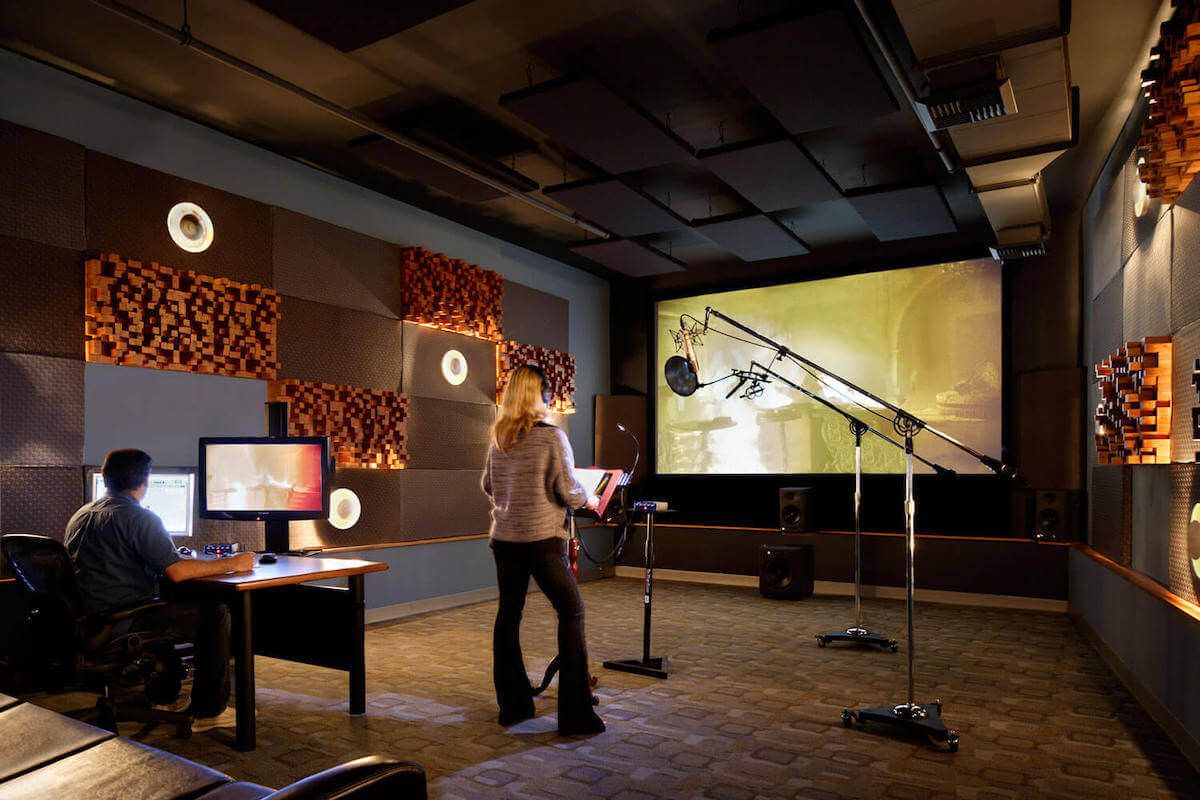If you’ve ever been on a set, you know how important it is to stay quiet when the 1st assistant director signals action. Unfortunately, there are some sounds that can’t be controlled. Planes overhead, unexpected cast or crew coughs, or even car horns, all contribute to the need for re-recording sound. So what is ADR in film and are there any other reasons you might want to use it?
ADR Meaning in Film
The in's and out's of ADR audio
If the sound is off in your project, it will be hard to miss. Getting it just right can make or break the film's success. But deciding if you should use ADR is entirely up to you. Some filmmakers loath it, while others swear by it, claiming it saved their films. In order for you to decide, it’s probably best you know exactly what it is.
Let's quickly define ADR so we can get to the good stuff — pro-tips on how to execute ADR on your own projects.
ADR Definition
What is ADR in film?
ADR in film is the process of re-recording audio in a more controlled and quieter setting, usually in a studio. It involves the re-recording of dialogue by the original actor after filming as a way to improve audio quality or reflect dialogue changes.
What does ADR stands for? Automated Dialog Replacement, also referred to as “looping.” In the early days, when the dialogue replacement was first being done, each re-recorded line of dialogue used a loop of film which would play over and over again in a loop. Modern techniques use computers to loop the section which is where we get the “automated” part of ADR.
Why is ADR used?
- Re-record inaudible dialogue from set recording
- Creative purposes — capture a better performance
- Altering intent of dialogue
- Adding in voice-over or off screen dialogue
ADR in film has been around for decades — basically since they were able to mix different audio tracks. For a quick but thorough history of ADR in film, as well as a quick demo on how ADR recording is done, here's a great video from Filmmaker IQ.
ADR in film, a quick history
ADR Film Recording
How is ADR recorded?
Even though there have been advancements in ADR in film, it requires a great deal of work. ADR recording takes place in what are called ADR sessions in which an actor watches a scene over and over again, while listening to the original production track on headphones to help guide them. They then re-perform each line to match the lip movement, wording and performance.
This process can also be separated into Visual ADR and Audio ADR. Visual ADR is when the actor only watches their performance and re-records their lines, while Audio ADR refers to the actor only listening to their performance on headphones.
Now that we've covered our ADR definition, let's see it in action. Here's Hugh Jackman in an ADR recording session for Logan.
ADR in Movies • Logan
Naturally, not every actor has to repeat such physically demanding performances. But it is inspiring to see Hugh Jackman putting just as much energy into his grunts and screams as he did on-set.
ADR AUDIO TIPS
ADR recording in your projects
Should we avoid ADR in our own films or embrace it? Bad audio is a sure-fire way to sink your project. ADR might seem difficult to pull off well but all it takes is practice.
What does an ADR recording session look like? In this next video, these filmmakers walk you through a simple ADR scenario with suggestions on what equipment to use, and how best to conduct the ADR session.
ADR is easy when you know how
With the right equipment, a grasp of audio editing, and a lot of patience, capturing professional-quality ADR is not impossible. Take these simple steps and do a practice run before you gear up for the next project. The results will be well worth it.
ADR Audio Pros and Cons
ADR recording is an opportunity
Sound and the way actors deliver dialogue is an art in and of itself. So if they realize an aspect of their character late in the game and want to give a new audible performance, it's their artistic prerogative.
ADR can enhance the quality of a scene and provide the film with nuances not explored on set.
Consider this example: here's legendary sound and picture editor Walter Murch dishing on Marlon Brando, The Godfather, and how he learned a valuable lesson on ADR in film.
ADR in Movies • The Godfather
Your first instinct should be to get the best audio recording possible while on set. There's nothing better than being able to capture the ambience of the location and the actor's original performance. In other words, ADR should be a last resort.
But no matter how hard you try to get clean production audio, you will inevitably be confronted with ADR in filmmaking.
Don't fight it — just get comfortable with the process and your finished film will be that much stronger.
UP NEXT
Production Sound Recording
Before you get to ADR, or maybe to avoid using it all together, know the basics of sound recording. Know the different audio cables and mics to get the best quality possible and learn how to manage “controllable noise.” Here is your ultimate guide to sound recording — from the gear you'll need to the pro-tips that will level-up your sound game.
Up Next: Sound Recording Gear & Tips →
Project management for video creatives. Tasks, file sharing, calendars and more.
Manage video production timelines, tasks, storyboards, shot lists, breakdowns, call sheets. Made for video creatives, new media and film.
